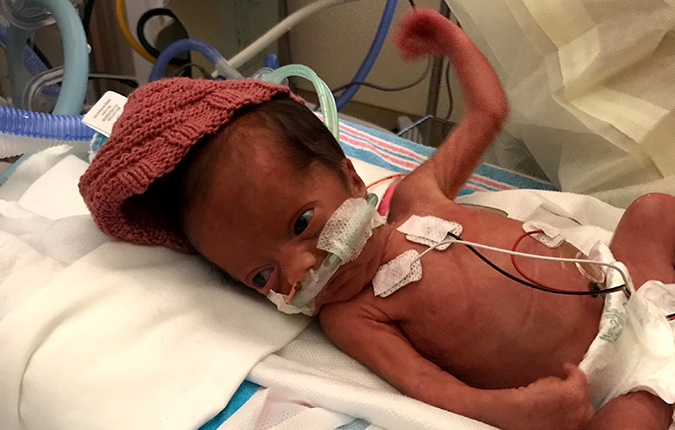Condition
Pediatric Feeding Disorders
Children's National Health System has a Feeding Disorders Program that includes a multidisciplinary group of specialists who have been evaluating and successfully treating young children with a variety of different feeding problems for almost 30 years.
Children’s National’s psychiatrist Irene Chatoor, MD, is an expert in childhood feeding disorders. In her book, When Your Child Won’t Eat or Eats Too Much, she explains the basics of how to introduce healthy foods to avoid the development of a childhood feeding problem and also outlines specific feeding problems she has come across in her research.
Selective Eaters
Do you have a child that will eat only yellow food like macaroni and cheese, but screams any time you serve peas? You may have a selective eater in your house. Selective eaters are children who either change their food preferences often or consistently refuse the same foods. There are two types of selective eaters:
- Children who change food preferences frequently
- Children who develop sensory food aversions, which can be a taste, texture, or even a whole food group
Selective eating disorders are caused by several genetic and environmental influences:
- Genetic influences
- Taste bud sensitivity
- Fear of trying new foods is hereditary
- Environmental influences
- Exposure to new food
- Role of rewards on food preferences
- Effect of modeling eating by parents and peers on food preferences
- Effect of negative experiences associated with eating certain foods
These types of eating disorders tend to surface when new foods are introduced. Dr. Chatoor developed a guideline for parents to follow when sharing new food with their children. There are also several things parents can do to specifically treat selective eaters.
Selective Eating Treatment:
- Determine underlying reason for selectivity
- Is it food aversion or is the child changing food preference constantly?
- Set limits with children who change food preferences frequently by only offering three different types of food at mealtimes and not giving into demands
- Upon protest of new limits, enable time-out method
- Encourage eating meals together, as a family, to increase modeling
- If your child gags or vomits upon first try at a new food, keep mood neutral, but make a mental note not to serve that food again
Infantile Anorexia
Infantile anorexia is a term Dr. Chatoor coined for those children who have a lack of appetite, the onset of which occurs in infancy and early childhood.
Signs of Infantile Anorexia:
- Small appetite
- Poor weight gain
- Malnourishment during the toddler years
- Difficulty turning off excitement, interfering with sleep and eat
- In excited state, do not recognize hunger
- Prefer playing and talking over food
Talk to your child’s pediatrician, if your child is experiencing any of the signs of infantile anorexia. Here are some helpful tips on treatment for this feeding disorder.
Infantile Anorexia Treatment:
- Teach how to recognize hunger and fullness
- Establish a regular feeding schedule
- Allow toddler to self-feed with own spoon
- Introduce finger foods
- Eat meals together as a family
- Enact time-out method if the child wants to leave the table before everyone is finished with their meal
Setting specific meal times allows children to experience hunger and fullness, and eating at the table with the family gives them a good model of how to eat.
Dr. Chatoor’s Time Out:
- Give only one warning
- Find a safe place, away from parents, as the time-out space
- If the child cries, wait until the crying subsides to begin the time-out
- Praise the child when crying stops for calming himself and tell the child to think about what he did wrong
- Set an alarm for the time-out and tell the child you will be back when the alarm sounds
- After the alarm sounds, praise the child again for staying in time-out and take them back to the scene of the crime and ask him to correct his behavior
The time-out method is beneficial in two ways:
- It’s important to use the time-out method for any distracted behavior at meal times, like running away to play or throwing food and utensils
- It teaches the child to self-soothe, thus making it easier to settle down in all excited situations. The child will learn to calm his or herself to eat and sleep.
For more information on feeding disorders and case studies on feeding disorders, read Dr. Chatoor’s ebook When You Child Won’t Eat or Eats Too Much.
Providers Who Treat Feeding Disorders Program
 Aasha's Rare Gift Will Help Other Babies Grow up Healthy
Aasha's Rare Gift Will Help Other Babies Grow up HealthyTesting the descrption field
Departments that Treat Feeding Disorders Program

Psychiatry and Behavioral Sciences
Psychiatry and Behavioral Sciences at Children’s National offers assessment, diagnosis and care for children and teens with behavioral, emotional and developmental disorders.







